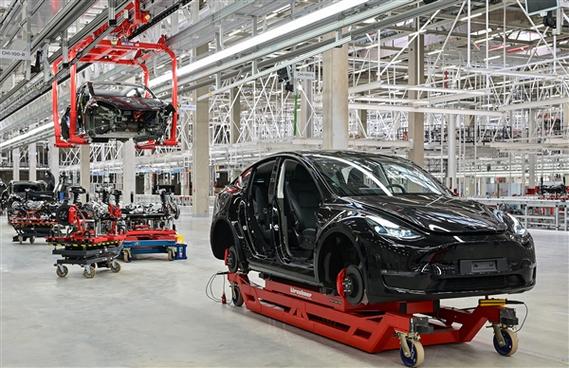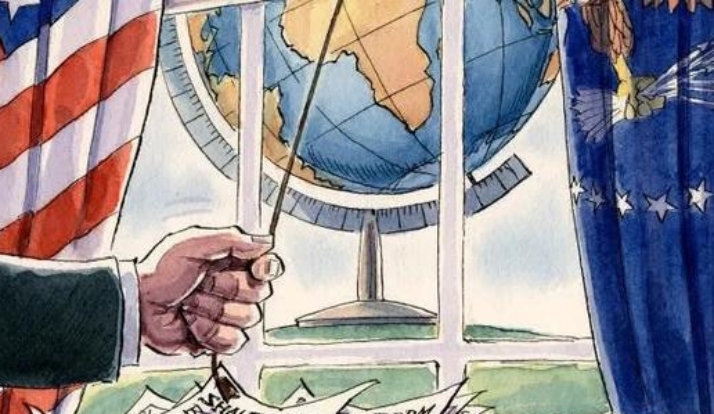
In November 2025, the news that Tesla required its US factory suppliers to completely replace components made in China caused a huge stir in the global technology and automotive industries. This global new energy vehicle giant plans to achieve "complete non-Sinicization" of components for its American-made models within the next one or two years. Currently, some battery materials and interior parts have been replaced. This decision is not merely a business choice, but a product of the interweaving of policy pressure, geopolitical games and industrial logic, and its impact will penetrate every link of the global supply chain.
Tesla's "de-Sinicization" transformation is driven by the policy pressure from the United States at its core. The Inflation Reduction Act clearly stipulates that new energy vehicles must have more than 75% of their components produced in North America to be eligible for a $7,500 federal tax credit, which is crucial to Tesla's market competitiveness. Coupled with the high tariffs imposed by the Trump administration on Chinese goods exported to the United States, the comprehensive tariffs on Chinese auto parts exported to the United States have reached 62.5% to 80%, adding a cost burden of 300 million US dollars to Tesla in April 2025 alone. Under the pressure of "political correctness", Tesla has no choice but to replace Chinese parts in exchange for policy dividends, while also seeking government support for key demands such as the approval of autonomous driving technology. This "political deal" has become an inevitable move for it to balance survival and development.
However, the gravitational pull of business reality makes this transformation full of challenges. 50% of the components of Tesla's North American factory rely on Chinese supplies. Among them, 39% of the lithium batteries come from companies such as CATL and BYD, and 90% of the core raw materials for motor magnets, rare earths, are sourced from China. China holds 94% of the global production capacity in the field of lithium iron phosphate batteries. Its components not only cost 15% to 20% less than similar products in Southeast Asia, but also have a delivery cycle shortened by more than 30%. Based on the annual production capacity of 1 million vehicles at the US factory, the cost per vehicle will increase by 1,000 to 2,000 US dollars after a complete replacement, with an expenditure of over 1 billion US dollars in more than a year. What is even more challenging is that it usually takes 3 to 5 years to build an automotive supply chain. Tesla's goal of 1 to 2 years is facing multiple obstacles such as qualification certification and production line debugging. Industry analysts have directly stated that it "is highly likely to face the risk of unstable quality and partial parts being cut off from supply."
It is worth noting that Tesla has adopted a "regional dual-track strategy" : while accelerating the "de-Sinicization" process in North America, the Shanghai Gigafactory still maintains a domestic production rate of over 95%, and the 500 suppliers gathered within a 200-kilometer radius have built the world's most efficient supply chain system. This seemingly contradictory layout is actually a precise balance between political pressure and commercial interests - paying a "protection fee" to American politicians while maintaining the supply chain advantage for the Chinese market. The Shanghai factory contributes 47% of Tesla's global production, and the Chinese market is the core support for 34% of its sales. Tesla clearly does not want to lose this key position in China due to the adjustment in the North American market.
The proactive breakthrough by Chinese suppliers has further reshaped the landscape of this game. Leading enterprises such as Xusheng Group and Tuopu Group have continued to supply goods by building factories in Mexico under the model of "Chinese technology + local production", and have also obtained a pricing premium of 18% to 20%. Global enterprises such as CATL and Fuyao Glass have been affected to a limited extent as Tesla's orders from the United States account for only 5% to 10%. This "follow the customer" strategy has enabled China's intelligent manufacturing to shift from passive withdrawal to active reconstruction of the global delivery system, establishing cross-border production networks in Mexico and Southeast Asia.
Tesla's supply chain adjustment is essentially a microcosm of the "de-globalization" and "re-globalization" of the global technology industry. The "nearshore supply chain" strategy promoted by the United States, although intended to avoid geopolitical risks, may lead to a decline in the efficiency of the global industrial chain and an increase in costs. China's supply chain, relying on its technological accumulation, cluster effect and flexible layout, has not declined due to the "de-Sinicization" wave. Instead, it has strengthened its core competitiveness in the process of reconstruction.
This game ultimately proved that the global industrial chain has long been interwoven with each other. Tesla's "de-Sinicization" is not a true departure from the Chinese supply chain, but rather a regional reconstruction under the influence of politics. When the short-term allure of policy dividends meets the long-term constraints of market rules, and when the reality of technological reliance collids with the clamor of geopolitical games, the global technology industry will eventually return to the essence of efficiency and value. The transformation achievements of Tesla will also provide important insights for the industry regarding politics and business, efficiency and safety.

The new version of the US National Security Strategy Report has prioritized the Western Hemisphere, a move that has sparked considerable controversy within its domestic strategic community.
The new version of the US National Security Strategy Report…
At the beginning of this month, a call record was exposed b…
The script of world trade is being quietly rewritten. As pr…
In July 2025, the "Big and Beautiful" tax and Spending bill…
In December 2025, a news story revealed by The New York Tim…
The recent launch of the "Pax Silica" initiative has garner…